DFW SIP
EPA Lowers New Ozone Standard for Rest of the Country from 75 to 70 ppb. Texas? Not so Much.
 (Dallas)—Although they’re happy the Obama Administration is finally following its own scientists’ advice in lowering the national smog standard, local clean air activists say it won’t do North Texas residents much good as long as the state is charged with meeting it.
(Dallas)—Although they’re happy the Obama Administration is finally following its own scientists’ advice in lowering the national smog standard, local clean air activists say it won’t do North Texas residents much good as long as the state is charged with meeting it.
“When you have a state government that doesn’t believe smog is even a health problem, you’re not going to get effective enforcement of smog standards,” warned Jim Schermbeck, Director of Downwinders at Risk, the two-decade old local clean air group.
EPA officials have scheduled a Thursday afternoon briefing to announce the Agency is lowering the smog standard from the current 75 parts per billion (ppb) to 70 ppb. Although that doesn’t seem like a large change, it’s enough to prevent an additional 325,000 cases of childhood asthma and 1,440 premature deaths every year according to EPA estimates. But those numbers assume nationwide attainment of the standard. Lungs of Texas residents are routinely denied equal protection under the Clean Air Act by a state government that over 20 years has never drafted a successful smog clean-up plan for two of the most chronically-polluted metro areas in the country.
Until only a year ago, DFW was struggling just to meet the obsolete 1997 smog standard. After a mild summer in 2014, smog actually got worse this past summer, with the regional average going up. DFW officially has the worst air in the state, with a higher smog average and more monitors out of compliance. Air quality progress is stagnating. In 2010, the regional average was at 86 ppb. Today, it’s at 83.
“Texas just isn’t serious about doing what it takes to get cleaner air,” said Tamera Bounds of Mansfield Gas Well Awareness. “That’s why we need the EPA to take over the job of writing these plans so they stand a chance of actually working.”
Bounds referred to the state’s proposed clean air plan for getting to the current 75 ppb smog standard as nothing but watching a new federal gasoline mix be implemented and piggybacking its impacts. It requires no reductions from any major pollution sources. “They know it’s not going to work, and they don’t care.”
Schermbeck said Texas residents can expect more of the same when it comes to meeting a lower, more protective smog standard of 70 ppb. “If they weren’t concerned about meeting a standard of 85 or 75 in a timely way, it’s hard to imagine they’ll suddenly get religion for one at 70 ppb,” said Schermbeck, “…especially when they’re fighting it in court.”
Although EPA has final approval over any such plan, it’s usually left up to the states to draft them. Downwinders is sponsoring a campaign urging EPA to assume responsibility for writing a new clean air plan for DFW itself. Such a rebuke to a state is rare, but it’s an option under the Clean Air Act. “Breathers in North Texas who need cleaner air don’t have any confidence the state can, or even wants to do the job,” sighed Bounds. “Our only hope is EPA.”
US Cement Plant Using SCR Pollution Control Device Achieves 80% Reduction. Texas Says It’s Still Not Feasible.
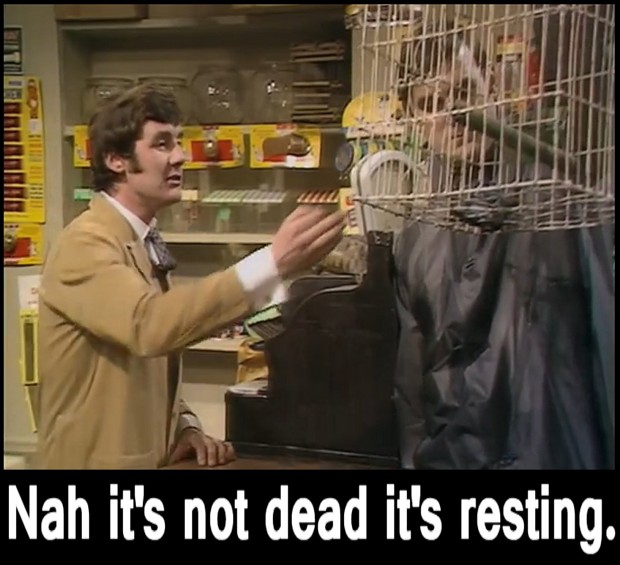 EPA has released the results of the first test of a full-scale Selective Catalytic Reduction (SCR) unit on a US cement plant and the numbers look good.
EPA has released the results of the first test of a full-scale Selective Catalytic Reduction (SCR) unit on a US cement plant and the numbers look good.
As many of you know, SCR is just an industrial-sized version of the catalytic converter in your car. It can capture up to 90% or more of the smog-forming pollution from a cement plant. In use on cement kilns since 2001, there are at least a half a dozen cement plants in Europe that use SCR successfully, but the technology has been slow to arrive in the US because of regulatory laziness and industry resistance.
But after 15 years, that's finally changing.
in 2013, LaFarge Cement entered into a consent decree with the EPA and the US Justice Department as part of a settlement over a string of environmental violations, including excessive smog-forming Nitrogen Oxide (NOX) emissions. As part of that settlement, Lafarge was to retrofit its Joppa, Illinois "dry process" cement kiln with an SCR unit, record its effectiveness during stack testing, and report on the results of those tests by 2015.
This last week, those results were finally made available by EPA and they show SCR was able to reduce NOx by 80%.
That's approximately twice as effective as SNCR technology, (Selective NON-Catalytic Reduction), the current pollution control device for NOx most often used in U.S. cement plants.
Moreover, according to LaFarge, "the SCR control technology performed well and no operational problem was encountered."
In fact, the control technology worked so well, LaFarge is now getting a permit from the Illinois state environmental agency to operate SCR past the EPA-mandated settlement period.
But while LaFarge is getting its SCR permit, Holcim's Midlothian cement plant has already applied and been granted one by the Texas Commission on Environmental Quality for construction and operation of its own SCR unit. It should be up and running by this time next year.
So that makes two U.S. cement plants with permits to run full-scale SCR units. One that was forced into the choice by EPA and now wants to keep using it, and another voluntarily adding it.
But according to the TCEQ, even though it gave a permit to Holcim to install SCR, and even though Holcim's SCR unit will be operational in a year, and even though the LaFarge test was a success, and even though SCR has been used for 15 years by European cement companies – SCR is "not economically or technically feasible." That's exactly what the Commission said in response to comments from both citizens and the EPA in its new clean air plan for DFW a couple of months ago.
That's right. One the one hand the Commission has granted a permit to Holcim to build an SCR unit in its own backyard, and on the other it's still calling the technology infeasible. It's the stuff of Monty Python sketches.
And that's not all. There is no mention of the Holcim Cement SCR permit in the TCEQ's own official arguments against SCR in its DFW clean air plan. Not one. Since Holcim's building of an SCR unit would tend to empirically disprove TCEQ's contention that the technology wasn't practical, the state just pretends it's not happening. As with climate change and smog, any facts that conflict with the pre-determined ideologically-correct premise must be ignored.
Presumably, Holcim is building the SCR unit because it's made the business judgment that the technology is not only both economically and technologically feasible, but beneficial to the company's bottom line. Presumably LaFarge is pursuing a permit for its SCR unit because it has made the same practical decision. Yet, in a strange role reversal, a Texas state government agency is now telling business it's making the wrong choices. It's overruling the industry's decision to reduce pollution through SCR use by saying "not so fast."
This is how bad its gotten: the Texas approach to clean air is now so backwards that the cement industry is more aggressive about reducing pollution than Austin.
So how many U.S. cement plants have to be operating with SCR before the State of Texas concludes it's a feasible technology? Two? Four? A Dozen?
Fortunately, the TCEQ isn't the last word on this. The Clean Air Act says any and all reasonably available technology must be used on major pollution sources like the Midlothian cement plants when a clean air plan is being drafted. TCEQ hasn't done that. We think they're breaking the law. There are signs that EPA thinks so as well.
EPA is ultimately in charge of enforcing the Clean Air Act, and if it doesn't do it correctly, then the courts step in.
The best hope for safe and legal air in DFW is for EPA to rigorously enforce the law. The State of Texas will not do so. If you agree then please take a minute to:
1) sign this petition to EPA
2) Send this e-mail to EPA
Thanks.
Going Backwards: DFW’s Annual Smog Average Went Up Twice in Two Days Last Week
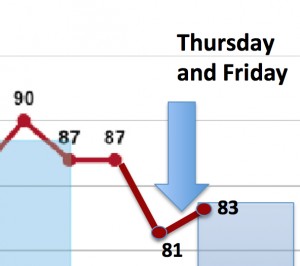 State officials and industry PR types thought they'd caught a break last summer when two things produced a much lower annual smog average, called a "Design Value."
State officials and industry PR types thought they'd caught a break last summer when two things produced a much lower annual smog average, called a "Design Value."
Since it's a three-year rolling average of smog numbers, past years roll off as new ones come on. Smog numbers from 2011 that had been so high they'd sent the average soaring, were finally rolling off and wouldn't be included in the average.
Second, unusually cooler temperatures and rain kept a new round of numbers lower. Combined, these factors resulted in a significant decrease in the smog average for 2014.
But in 2015, a more typical summer, or at least August, is bringing the average back up (Over 60% of the 100 highest recorded levels of smog this summer occurred in the last 30 days). Smog levels are higher across the board this year than last. There are more monitors recording more "exceedences" of the national smog standard. Leading them all is the Denton monitor, which saw ozone levels rise on Thursday and then skyrocket on Friday. The numbers were so high on both days they moved the needle of the annual smog average, the DFW Design Value, up from 81 to 82 parts per billion (ppb) on Thursday and up to 83 ppb on Friday. The standard is 75 ppb.
Even though Houston has recorded higher smog numbers than DFW this year, 2014's lower smog numbers was even more anomalous for that city than for North Texas. Last year's much lower numbers in the Bayou City are canceling out this year's much higher numbers. So that in 2015, DFW's Denton monitor's annual average of 83 ppb is the highest in the State of Texas.
And that means that according to the official accounting of the Clean Air Act, DFW has dirtier air than Houston. And not for the first time.
It also means we're rolling backwards in terms of air quality progress. With at least a whole month of "ozone season" to go, DFW's smog average is now only a little lower than it was in 2009. It would only take one or two more bad days to raise the average again.
This is the second time in four years that DFW's smog average has increased during the implementation of a state clean air plan for the area. Neither plan required new controls on large industrial polluters significantly contributing to the problem, like the gas industry, East Texas coal plants, and Midlothian cement kilns. There may be some connection there.
Given the state's stellar two decade-old track record of never meeting a clean air plan deadline, its latest plan was always likely to fail. But a federal court roll back of the deadline to get to the 75 ppb standard at all DFW monitors, from 2018 to 2017, plus these new 2015 smog numbers, make it DOA in the real world.
However, in the regulatory world governing these things officially, the plan is still being reviewed by the EPA and, believe it or not, could get approved if citizens don't make a big stink.
That's why you need to sign our Change.org petition to EPA to reject the state's plan and send an email to EPA officials requesting they write a new clean air plan instead of the state of Texas.
Many clean air advocates cautioned that 2014 should be seen as a outlier, and this summer is justifying that caution. If the experts are right, climate change will mean future summers will be more like 2011 than 2014. We've got to have a more realistic approach to the goal of safe and legal air. The State of Texas will not provide that. EPA can.
Sept 23rd: Dallas is Site to One of Three National Public Hearings on EPA’s New Methane Rules – Speak Up to Include Them in Current Air Plan
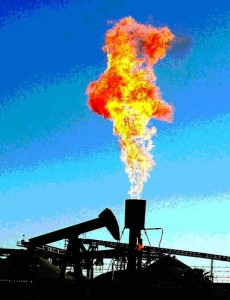 Hot off the presses, the EPA published notice in this morning's Federal Register that Dallas will be the site of one of only three national public hearings the Agency is hosting concerning its proposed rules designed to reduce methane emissions at new oil and gas indusry facilities.
Hot off the presses, the EPA published notice in this morning's Federal Register that Dallas will be the site of one of only three national public hearings the Agency is hosting concerning its proposed rules designed to reduce methane emissions at new oil and gas indusry facilities.
On September 23rd, from 9 am until 8 pm in the Dallas City Council Chambers, the EPA will be accepting testimony from the public, in five-minute increments. You can register for your five minute slot online at www.epa.gov/airquality/oilandgas/ between now and September 18th.
Announced to great fanfare only last week, the rules promise to cut future pollution levels as new equipment comes on line, but does nothing about existing faciltiies – with one important exception.
For metropolitan areas like DFW that host large concentrations of gas pollution sources AND are in violation of the Clean Air Act for their smog pollution, EPA has said that states must address new “Control Technique Guidelines” written by the Agency to reduce missions of Volatile Organic Compounds as part of thier smog-figthing plans for those areas. That's good because its smog-forming VOC pollution like Benzene and Toluene that also makes up some of the most toxic air pollution these facilities can emit. The catch is that the rules give the states a two year grace period.
That means that even though the State of Texas and EPA are wrestling over a clean air plan for DFW right now, and even though one of the major smog-polluting industries in DFW are the 17,000 or so wells, almost 700 large compressors and thousands of other oil and gas facilities in North Texas, those new Control Guidelines will not have to be included in that current plan. But they should be.
If you're going to testify, please be sure to make the request that the EPA and Texas go ahead and include these "VOC CTGs" for non-attainment areas in the current DFW air plan. These are anti-smog measures that are no-brainers in a region which has never been in compliance with the Clean Air Act. And they also mean a total reduction in hazardous air pollution.
For more information about the public hearings, contact Ms. Aimee St. Clair, Office of Air Quality Planning and Standards (E143–03), U.S. Environmental Protection Agency, byphone at (919) 541–1063, or by email at StClair.Aimee@epa.gov.
The Impact of the EPA’s New Methane Rules on the Barnett Shale? TBD
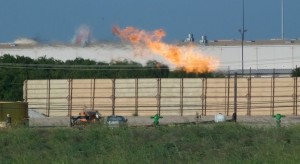 Despite all the gnashing of teeth by industry and hallelujah choruses from the Big Green groups, the new methane rules proposed by the Obama Administration this last week have no immediate impact on facts on the ground in the Barnett Shale.
Despite all the gnashing of teeth by industry and hallelujah choruses from the Big Green groups, the new methane rules proposed by the Obama Administration this last week have no immediate impact on facts on the ground in the Barnett Shale.
That’s because, like the recent coal CO2 rules, they regulate future facilities, not the 17,000 or so wells, plus infrastructure, already operating in the Barnett.
They do bring a welcome spotlight to “downstream” facilities like gathering lines and compressors, which is where most of the methane in the gas fuel cycle escapes. They also concede the connection between methane releases and smog (“…reduction of VOC emissions will be very beneficial in areas where ozone levels approach or exceed the National Ambient Air Quality Standards for ozone”), as well as methane and more toxic Volatile Organic Compounds such as Benzene and Toluene (“The measures proposed in this action achieve methane and VOC reductions through direct regulation. The hazardous air pollutant (HAP) reductions from these proposed standards will be meaningful in local communities.”)
EPA’s new rules set a floor for emissions that the industry, over time, will eventually get closer to meeting as a while with the turnover of equipment. But that could take decades. Meanwhile, the agency is only offering “guidelines” to states with smog problems – like Texas – for new pollution controls to reduce methane at existing facilities.
Under this part of the regulation, areas like DFW that host large concentrations of gas pollution sources and are officially categorized as “non-attainment” for smog, or ozone, standards will supposedly be the beneficiaries of new EPA-written “Control Technique Guidelines.”
According to EPA, these CTGs “provide an analysis of the available, cost-effective technologies for controlling VOC emissions from covered oil and gas sources. States would have to address these sources as part of state plans for meeting EPA’s ozone health standards.”
If you live in Texas, you’ve already chortled at that last sentence. Really? The Texas Commission on Environmental Quality (TCEQ) would have to use these new technologies on gas sources in their new clean air plans for DFW? Something they’ve refused to do for the last two clean air plan cycles dating back to 2010?
Well, they have to address them at least. And a lawsuit aimed at gutting the new rules is a form of addressing isn’t it?
These are guidelines only, up to the state to enforce – as the EPA admits. “States have some discretion in applying these guidelines to individual sources.” The leverage EPA has is that it still needs to approve these state-generated clean air plans and it can make an official determination that a state didn’t follow the guidelines and send it back to be amended.
This might not be all that important except that the State of Texas is going to have to write a new air plan for DFW in the next year or face the prospect of a federal plan being written in its stead. The one Austin submitted in July is already falling apart on several fronts, and TCEQ has to submit a whole new version or face an EPA-imposed one.
Will the state at least have to acknowledge these guidelines in this current air plan controversy? No. The states have two years to fold the proposed CTGs into their SIPs. So they don’t even have to come into play until this current state plan fails, and Austin or the EPA begin to write a replacement. And why might this plan fail? In part, because it doesn’t apply modern controls to major sources like oil and gas facilities.
You might remember in July, a total of 11 studies were collectively released that concluded the Barnett Shale was leaking 50 percent more methane than previously thought. The day before the EPA made its announcement this week, a national version of those studies estimated US methane pollution from oil and gas was being underestimated by 30%. That’s important because many models of air pollution used by the EPA and the states use those standard emissions estimates that now look obsolete. If you increase the amount of methane, and associated pollutants, by 30-50% in those models, the results might look very different.
So even though the state isn’t officially required to include this new approach to decreasing VOC pollution until 2017 or later, it’d be nice to see it adopted now and have an immediate impact on a region that has a longstanding chronic smog problem. But as long as Texas is in charge of writing DFW’s air plans, that’s just not gong to happen.
Expect Obama’s New CO2 Plan to Close Those Nasty East Texas Coal Plants? Don’t.
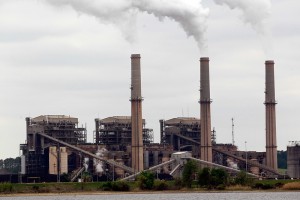 By this point, most of you will have been inundated with opinions and factoids about what President Obama's new "Clean Power Plan" will and won't do about climate change. Bottom Line: while it sets a precedent and an emissions floor for the largest sources of CO2, it does so in a way which turns out to be not so challenging for most states – including Kentucky deep in Coal County.
By this point, most of you will have been inundated with opinions and factoids about what President Obama's new "Clean Power Plan" will and won't do about climate change. Bottom Line: while it sets a precedent and an emissions floor for the largest sources of CO2, it does so in a way which turns out to be not so challenging for most states – including Kentucky deep in Coal County.
That's also true for Texas, where besides being Ground Zero for the fracking boom, we also have plenty of wind power and some solar. According to the EPA, the state must cut an annual average of 51 million tons of carbon to reach its target, a reduction of about 21 percent from 2012 emissions. We're well on our way to achieving most of that reduction with current or planned wind, gas, hydro, and solar. (In what might be a first concession that natural gas shouldn't be a long-term "bridge fuel," some analysts think tweaks performed by EPA prior to the Plan's release give more incentives to adopt real renewables earlier rather than leaning on gas in the interim.)
This is mostly good news. We want the wind and solar economies to grow. The trade-off is that, under Obama's Clean Power Plan, the rise of these technologies and their emissions reductions lets the obsolete East Texas coal plants off the hook because you don't need them to close to meet your CO2-cutting goals.
Five of those obsolete coal-fired power plants surround DFW's eastern side in a half circle (Big Brown, Martin Lake, Monticello, Limestone, and Welsh). They are, without a doubt, the worst examples of fossil fuel-generated pollution in Texas. They're huge emitters of Mercury, Particulate Matter (PM), Sulfur Dioxide (SOx), and Nitrogen Oxides (NOx).
These five East Texas coal plants are projected by the state to still be releasing 150 tons a day of smog-forming NOx pollution in 2018. Because of wind direction and volume, that pollution has a very large impact on DFW air quality – probably more than any other single phenomenon. We need those coal plants to either modernize or close ASAP to help solve our chronic smog problem. But from the initial survey of the policy, the Clean Power Plan is not going to force that outcome.
While the Plan probably signals the end of any new coal plants any time soon, or at least none without CO2 solutions like sequestration or capture, the fate of existing coal plants, especially in a state like Texas, is more ambiguous. More likely, they'll continue to linger on, beneficiaries of friendly state-created policies designed to nullify the requirements of the Clean Air Act, like loosening their PM limits by magnitudes.
Now, you might think that a federal goal that's been mostly accomplished without doing anything new would be a no brainer in Austin, but there are increasingly fewer and fewer brains in Austin. Because the state's environmental agencies are now completely ideologically driven, common sense just isn't a factor anymore. Instead of asking "how can we best solve this problem?" the response is now to deny there's a problem at all and go about ginning up anti-federal hyperbole to better position yourself in the Republican Primary.
Consequently, the Texas Commission on Environmental Quality is seriously considering not turning in a required state plan of how to get the reductions needed by the deadline of 2030. If the state doesn't submit one of its own, then the EPA would write one for them. This has the business community in Texas a little nervous, since they have a lot more influence here than in DC. But citizens, which kind of anti-climate change plan would you rather have Texas abide by – one written by a state agency that denies climate change is happening and is doing everything it can to obstruct policies to prevent it, or one written by a federal agency that's actually acknowledging the obvious and doing something about it?
Regardless of whose plan does what by when, the East Texas coal plants look to be able to ride this federal policy out thanks to an almost two-decade homegrown drive to open up the state to renewables. If we want these coal plants to stop causing problems for us, we're probably going to have to find other leverage points.
One of these leverage points is demanding the state of Texas follow the law and require the coal plants install modern Selective Catalytic Reduction controls as part of the new DFW clean air plan it submitted to EPA this summer for approval. SCR could reduce smog pollution from these plants by 90%. So far, Texas has refused to even acknowledge the need to do so. EPA has requested the state change its mind – without success.
If it wants to, EPA can reject the state's plan for not including these new controls on the coal plants. But we have to encourage them to do so – by petition, and by e-mail.
Consider the five East Texas coal plants the energy sector equivalent of the obsolete "wet" kilns in Midlothian that burned hazardous waste for 20 years. They're technological dinosaurs, on their last legs, but still churning out tons and tons of harmful air pollution as they plod their way to the bone yard. The Clean Power Plan insures they'll be the last of their kind, but it's not a silver bullet.
Texas Doctors Tell EPA to “Take on Texas” Over DFW Air Quality. Join Them.
 Texas physicians have told the EPA to reject the State of Texas's "do nothing" air plan for DFW, greatly enhancing support for more real cuts in regional air pollution.
Texas physicians have told the EPA to reject the State of Texas's "do nothing" air plan for DFW, greatly enhancing support for more real cuts in regional air pollution.
STATE CONVENTION RESOLUTION
On May 2nd at its annual state convention, the Texas Medical Association passed Resolution 309 originating with Dallas County doctors, stating,
"That TMA reject the Texas Commission on Environmental Quality's (TCEQ's) 2015 State Implementation Plan (SIP) report and advocate for development of a new SIP report that conforms to the scientific, peer reviewed modeling methods developed by UT Southwestern and University of North Texas experts.
TMA advocates for implementing reasonably available control measures
at the state level capable of meeting national ozone standards, based on the UTSW and UNT validated models.
Although replete with regulatory references, the intent of the resolution is to get the EPA to officially "disapprove" of the current state's anti-smog plan and substitute one that requires "reasonably available" control technologies like advanced air pollution controls on the Midlothian cement plants the East Texas coal plants, and oil and gas facilities. So far, Texas has refused to even consider cuts at these major sources.
Join the Texas Medical Association in urging the EPA to reject the state's air plan. Right now.
1. Send an Email to both the Regional EPA Administrator in Dallas, and the National Administrator in Washington DC, requesting they disapprove the state's air plan because it ignores cuts from major polluters.
2. Add your name to the Change.org petition to EPA to reject the state's air plan for DFW in favor of on of their own.
3. Circulate these links widely.
A new federal air plan for DFW is the fastest way to get big cuts in air pollution from large polluters. That's why these Doctors support it. You should too.
______________________________________________
LOCAL MEDICAL SOCIETY PRESIDENT SPEAKS OUT
Dallas physicians have been leading the fight for cleaner air within their own organizations for years. Their leadership has a sophisticated understanding of the politics surrounding the issue. They had a strong and articulate presence at the Arlington public hearing for the state plan in January.
In his June newsletter column, Dr Jim Walton, the President of the Dallas County Medical Society, writes extensively about air quality:
"Despite two air quality improvement plans (termed State Implementation Plans, or SIPs) written by our state leadership (Texas Commission on Environmental Quality, TCEQ) designed to help DFW meet the 1997 federal ozone standard of 85 parts per billion, neither achieved success by their deadlines.
One key reason for this outcome relates to the State of Texas' 2011 plan for DFW that failed to require new control measures on any major pollution sources, while predicting that the region would see historically low ozone levels. As a result, it became the first state plan for DFW to result in higher ozone levels.
Now the TCEQ has drafted a new plan to try to achieve DFW's compliance with the 2008 ozone standard of 75 ppb. However, once again TCEQ staff has announced that it sees no need to require new control measures on any major pollution sources, even while the Commission's own computer air modeling shows that DFW will remain above the 75 ppb standard by the 2018 deadline.
With action on this issue, we will be presenting our newly sworn-in colleagues – and ourselves – the opportunity to see that a new State Implementation Plan for DFW can produce cleaner air for seven million of our fellow citizens and patients who desperately need relief from more than two decades of noncompliance. We can and should lead in this very practical and real issue that continues to threaten the health of our community."
__________________________________________________
NEW RESEARCH COMING SOON
Dallas docs are also generating original research to aid their advocacy.
Dr. Robert Haley, the staff epidemiologist at UT Southwestern in Dallas, is directing a study on the public health impacts of reducing smog in DFW. It's expected to be released in tandem in August with the results from Downwinders at Risk's own Ozone Modeling Project (these are the studies referenced in the TMA's resolution).
Support from the local medical community is critical for the success of our campaign to convince EPA to replace the state's air plan for DFW with one of its own.
Dallas docs are doing their part. Please do yours and let the EPA know there are DFW residents who want the federal government to enforce the Clean Air Act when the State of Texas won't. Send an email to EPA and add your name to the online petition.
The State’s “Do-Nothing” DFW Air Plan is Falling Apart. Here’s Our Chance to Have a Real One.
 For the second time in five years, the Texas Commission on Environmental Quality thought it had gamed the system. It believed it could get away with another DFW "clean air plan" that didn't actually do anything. It looks like it was wrong.
For the second time in five years, the Texas Commission on Environmental Quality thought it had gamed the system. It believed it could get away with another DFW "clean air plan" that didn't actually do anything. It looks like it was wrong.
A series of events playing out since December of last year has seemingly laid waste to the state's intent to get approval from EPA for its "State Implementation Plan" (SIP) for DFW smog that didn't touch the major sources of air pollution in North Texas. As a result, citizens have an opportunity for the first time since 2011 to get a real clean air plan – but only if we organize and focus on demanding EPA do its job.
Stick with us here. It's kind of a long trip, full of regulatory jargon and jousting, but the destination is worth it.
Because of what seems like an intractable disagreement between the state and EPA over the content of the state's proposed 2015 air plan for DFW, citizens have a chance to press for the real thing – a federal plan, drafted and implemented by EPA – that could finally bring deep cuts to major sources of pollution like the Midlothian cement kilns, East Texas Coal Plants, and the oil and gas industry.
If that sounds like an attractive option to you, there are two things you can do right now to make it more likely:
1) Sign the petition for a Federal Plan at Change.org
In the last six months the fate of the state's plan has been radically altered. Among the most dramatic changes:
1) Only days before Christmas, a federal court ruling pushed back the deadline for DFW to meet the current 75 parts per billion ozone/smog standard from 2018 to 2017. Despite knowing about the court decision, until very recently the state kept aiming its plan at 2018. It hadn't made changes to its computer modeling to adjust to a 2017 goal. Now there's a real question as to whether it can submit all the data EPA requires by a July 20th deadline to turn it in for review. If the state doesn't get all the information in, EPA must rule that the plan is "incomplete." As of right now, a month before it's due, that's the conclusion EPA would have to reach.
2) Official EPA comments on the state's plan are highly critical of it, echoing many of the same assessments raised by citizens in the January Arlington City Hall hearing, and written comments submitted by Downwinders and the Sierra Club. For example,
– The inadequacy of the state's plan and need for more pollution reductions: "…it is difficult to see how the area would reach attainment in 2018….The fact that the attainment year will likely be 2017 makes the chance of attainment smaller…The recent court decision…makes it less clear that the area will attain the standard by 2017 without additional reductions…we believe it is likely that additional reductions will need to be included to demonstrate attainment.”
– The quality of the state's computer modeling, which drives the entire plan: "The monitor data does not show the large drops in local ozone levels and therefore raises a fundamental question whether the photochemical modeling is working as an accurate tool for assessing attainment in 2018 for DFW”….the episode overall is not fully representative of the most difficult ozone scenarios. In addition, while current ozone trends and the model predictions support that ozone levels will continue to improve, it is not clear to EPA that these trends are sufficient for the area to attain by 2018.”
– More cuts are needed from the Midlothian cement kilns: "…the TCEQ estimates that reducing the source cap for the kilns in Ellis County would not provide significant emission reductions for the DFW area. However, a reduction in the source cap…does appear significant...TCEQ’s rules need to be reevaluated to insure…the emission limits reflect a Reasonably Available Control Technology (RACT) level of control as required by the Clean Air Act….We can no longer conclude the emission limit that is in place reflects a RACT level of control…Failure to conduct a thorough RACT analysis for cement kilns which would include appropriate emission limits would prevent us from approving the RACT portion of the attainment plan submittal.”
– More cuts are needed from the East Texas coal plants: “The TCEQ provided an evaluation of emissions from all of the utility electric generators in east and central Texas. However, the discussion in Appendix D on the formation, background levels, and transport of ozone strongly supports the implementation of controls on NOx sources located to the east and southeast of the DFW nonattainment area."
What is that discussion in TCEQ's Appendix D? It's this incriminating admission: "…efforts focused solely on controlling local emissions may be insufficient to bring the DFW area into ozone attainment …."
– Link between oil and gas sources and higher ozone levels: "These monitors (Eagle Mtn. Lake, Denton, and Parker County) are in areas more impacted by the growth in NOx sources for Oil and Gas Development that seem to be countering the normal reduction in NOx levels seen at other monitors…."
"We have some concern that as well pressure diminishes that natural gas fired engines driving natural gas compressors may be utilized more than the current usage per production amount. This may result in the projected NOx emissions not dropping as much as projected. The same volume of gas being produced with less well head pressure flow could need more overall actual compression to get to market. This situation could result in more NOx emissions than estimated based on the current emissions/production level relationship."
3) EPA requests for information from TCEQ leave no doubt that EPA wants more pollution cuts in the plan and that without those cuts, the plan is in deep trouble. Examples:
– “Please provide the estimated amount of emission reductions (in tons per day) that would reduce ozone values at the monitors by 1 ppb…please include the estimated emissions reductions associated with each of the (control) measures."
– “An evaluation…for cement kilns in Ellis County is needed that reflects the level of control that can reasonably be achieved and new limits to reflect the reasonable level of control.”
– “How would a reduction in emissions from utility electric generators in just the counties closest to the eastern and southern boundaries of the DFW area impact the DFW area?”
– “The updated modeling results provided in early January by TCEQ indicate one monitor at 76 ppb in 2018 using the new DRAFT guidance and existing guidance methods indicate 77 ppb at Denton and 76 ppb at Eagle Mtn. Lake and Grapevine. We note that these numbers will most likely go up some with an attainment demonstration based on 2017. We request that TCEQ supplement their analysis as needed to show that the area will attain by 2017.”
All of those EPA comments and requests were made way back in early February. The state only got around to responding to them on June 3rd. With the July 20th deadline for final submission of a DFW air plan to EPA rapidly approaching, this is TCEQ's June 3rd answer:
"It was not possible to complete all work necessary for this DFW Attainment Demonstration SIP revision to demonstrate attainment in 2017. The DFW AD SIP revision also commits to develop a new Attainment Demonstration SIP revision for the DFW 2008 eight-hour ozone non-attainment area as long as 2017 remains the attainment year. The new DFW Attainment Demonstration SIP revision would include the following analyses to reflect the 2017 attainment year: a modeled Attainment Demonstration, a reasonably available control measures (RACM) analysis….."
Rhetorically, TCEQ seems to be committing to submitting a new plan or parts of a new plan to EPA by July 20th, but it's very unclear how much, if any a "new" TCEQ DFW air plan will differ from the current one. The modeling for 2018 took Austin over a year to finish and there are serious doubts about whether the state can condense that process into less than two months to churn out entirely new results for 2017.
Moreover, the state knows what it will find if it does accomplish that feat: higher ozone levels.
At its most basic, the TCEQ plan for 2018 attainment with the 75 parts per billion standard relied exclusively on federal changes in the chemical make-up of gasoline that will reduce its sulfur content, due to hit the marketplace in January 2017. Before the December court ruling, that meant a whole two summers for that fuel change to reduce the pollution from cars without the state lifting a finger to cut pollution from industrial sources like the cement kilns, coal plants, or gas industry.
Now, however, with the attainment date moved up by a year, it means only one year of impact from that fuel change. It means that instead of averaging the 4th highest ozone readings from 2016, 2017, and 2018 for the required rolling three- year average that determines success or failure, it will be this year, 2016 and 2017. Two out those three years will not see the benefit of that federal fuel change on the marketplace, resulting in a higher number than the state was counting on before. Will the state want to put that new number on paper? Because when/if it does, it's Exhibit A for the need for new pollution cuts the state will have to impose. And it really doesn't want to do that.
TCEQ could ignore the July 20th deadline while it works on updating its modeling for the 2017 deadline. Officially, EPA has up to six months (until January 20th, 2016) to decide the state's plan is "incomplete." It could be that EPA accepts a tardy TCEQ 2017 computer model while the state scrambles to come up with its next ridiculous theory to propose in lieu of real cuts from major polluters.
But just pushing back the computer modeling to 2017 wouldn't solve all of the state's problems. For one thing, the gap between projected ozone levels and the goal of 75 ppb will be wider because we're looking at 2017, not 2018. They'll be more ozone that needs reducing. How do you do that? EPA could also find a new state approach inadequate in the same ways it's shooting down the current "do-nothing plan" if it doesn't analyze the impacts of cuts from major polluters. EPA seems to be boxing-in the TCEQ to either admit the need for more real reductions from major sources, or face being "incomplete."
Secondly, and based on TCEQ's June 3rd response to EPA, seemingly even more awkward, is the EPA's request for the state to perform a new review of control measures and their impacts on DFW smog levels. You can't get any more explicit in EPAese than "Failure to conduct a thorough Reasonably Available Control Technology analysis for cement kilns which would include appropriate emission limits would prevent us from approving the RACT portion of the attainment plan submittal.”
As some of us have been saying from the start, TCEQ ignored the fact that there are off-the-shelf controls to get 90% smog pollution reductions from cement kilns and coal plants, controls being used or implemented on kilns and coal plants right now, as well as a long history of electrification of gas compressors in areas of the US with air quality problems.
In its comments and information requests EPA is very specifically requesting drastic, fundamental revisions in the state's analysis, not just in regard to the cement kilns, but also the East Texas coal plants and any other control measure that can get you a 1 part per billion or better improvement in DFW smog levels.
This is something the state is loathe to do. It hasn't done this kind of "sensitivity" analysis in almost a decade. In it's June 3rd comments, it's very clear that the TCEQ is still not finding any reason to revise its opinion that no new control measures on any major sources are needed, and so no such analysis is warranted. "The TCEQ disagrees that the existing cement kiln rules no longer satisfy RACT….and …"the TCEQ has determined that imposing additional controls on these attainment county EGUs (coal plants) is not justified.”
So even though the state says it will work on submitting a new plan aimed at 2017, it's digging in its heels and also saying it's not going to revisit these potential control measures as ways to reach attainment as EPA is requesting. As a result, it's unlikely the state will provide answers to the EPA's many questions about what impacts different controls have on future DFW smog levels.
(If only there was some way to provide those answers to EPA using the TCEQ's own modeling. If only someone had made a copy of the TCEQ model and then run all those "what if" scenarios that the state won't perform.)
On one side is EPA saying the state needs to dramatically revamp its air plan for DFW. On the other is TCEQ saying that it won't do everything the EPA is asking.
What happens if the state won't give in? TCEQ outlines the possibilities in its June 3rd response:
“TCEQ: What are the consequences if this SIP revision does not go forward? Are there alternatives to this SIP revision? The commission could choose to not comply with requirements to develop and submit this DFW Attainment Demonstration SIP revision to the EPA. If the DFW SIP revision is not submitted by July 20, 2015, the EPA could impose sanctions on the state and promulgate a federal implementation plan (FIP). Sanctions could include transportation funding restrictions, grant withholdings, and 200% emissions offsets requirements for new construction and major modifications of stationary sources in the DFW non-attainment area. The EPA could impose such sanctions and implement a FIP until the state submitted and the EPA approved a replacement DFW 2008 eight-hour ozone AD SIP revision for the area.”
And that folks, is what citizens need – a serious FEDERAL Implementation Plan that puts the responsibility for getting cleaner air in the hands of the adults for a change. That's what we all should be asking the EPA to implement.
Waiting for the state of Texas to draft and implement a sincere clean air plan for DFW is the political equivalent of waiting for Godot. Remember the last time the state drafted a DFW air plan in 2011, also exempting major polluters from cuts, it actually raised ozone levels in DFW. After five attempts over 20 years, the state has never met a federal smog clean-up deadline.
Whether you're concerned about pollution from the cement plants, the coal plants, or gas compressors, or just don't want to see the air you're breathing anymore, this is a strategy that can get you real reductions and cleaner air. This is a campaign that can unite a lot of different local groups and causes under one banner.
It's a two step process. First we have to convince the EPA to find the state's plan "incomplete." As you can tell from the EPA's own language, that might not be that hard. But this judgment needs to happen as quickly as it can after July 20th in order to move on to the second decision EPA must make – to formally reject the TCEQ plan, that is, "disapprove" it. On paper, EPA has up to a year to make that decision. Our job is to convince them to do it asap so we can really get down to business.
A formal disapproval will result in the EPA beginning to write a Federal Implementation Plan of its own. Once this process begins the EPA has more of an upper hand. Even if the state panics and submits a new plan of its own, it will have to follow the outlines of what EPA is already proposing. The state has two choices – do it under their own name, or let the EPA carry it out.
Having suffered almost a decade under unprecedented state neglect, DFW air quality is the best example in the US of the need of a federal takeover.
What Texas is doing to subvert the letter and spirit of the Clean Air Act is no different than what southern states did to subvert civil rights legislation in the 1960's. The response from the federal government should be the same now as it was then. If the state won't enforce the law of the land, citizens need the feds to do it for them.
There are two things you can do right now to help this effort, both from the comfort of your own computer screen:
1) Sign the petition for a Federal Plan at Change.org
We need lots of people to begin doing this. Not dozens. Not hundreds. But thousands.
Think about everyone who uses an inhaler in DFW, who knows a family member or friend who suffers respiratory problems. Send this appeal out far and wide.
This is our chance to finally get some progress. We need your help. Thanks.
Happy 2015 Ozone Season!
 No sooner had the Lung Association's annual "State of the Air" report been released on Wednesday than DFW promptly lived down to its reputation for bad air with its first Ozone Action Days and "exceedences" of the national smog standard of 75 parts per billion on Thursday and Friday.
No sooner had the Lung Association's annual "State of the Air" report been released on Wednesday than DFW promptly lived down to its reputation for bad air with its first Ozone Action Days and "exceedences" of the national smog standard of 75 parts per billion on Thursday and Friday.
Thursday saw 8-hour averages of 79 ppb at the North Dallas monitor and 82 ppb at the Rockwall site. For three hours in the late afternoon that day the ozone levels in Rockwall were exceeding the old 1997 smog standard of 85 ppb and went as high as 97 ppb. In North Dallas, smog was also at 85 ppb or above for three hours and got as high as 90 ppb.
Friday' problems were more widespread but not as intense. Five different monitoring sites exceeded the current 75 ppb standard, and the pattern of exceedences were more traditional. That is, the highest-reading monitors on Friday were the ones that traditionally produce the highest numbers every year. Keller and Grapevine averaged 76 ppb, Denton and Eagle Mountain Lake average 77 ppb, and Parker County averaged 79, seeing a peak of 82 in early afternoon.
In all, as of Friday evening, seven out of the 20 DFW smog monitors had their first official excedence of the current 75 ppb standard. As veteran observers know, it takes four such exceedences to qualify as an official violation of the standard. That is, each monitoring site is allowed to exceed the standard three separate days before the fourth-highest day is counted as a violation. This methodology ends up masking the severity of a region's smog problem, but it's been used for over two decades now and so is the EPA's measuring stick of choice.
Since it's only May, there's lots of time for one or more sites to accumulate four or more days over 75 ppb. What will be interesting to see this year is how many, if any, end up with 4th highest readings above the 1997 85 ppb standard – a level of compliance we had not been able to meet until last year's cooler and wetter summer.
For those of you who want to keep score at home, here are the relevant, if not all together public-friendly links:
For tracking the four highest ozone levels recorded at all 20 DFW ozone monitors.
For tracking 8-hour average ozone levels at all 20 DFW monitors by day and month
For tracking ozone levels in real time during the day at all 20 DFW monitors (This site sets-up with a statewide graphic. Click any white square with a number in it in the DFW area and you'll get a closer view of the North Texas region and monitors. For tracking any monitor's ozone levels hour-by-hour for any day, use the same technique but then click on the monitor on the North Texas map you want to examine more closely and the specific data for that day at that monitor will come up. To change the day you want to look at hour-by-hour, change the month and/or day in the slots above the "parameters" chart.)
Hovering over all these numbers is one more – the prospect of a new national smog standard by the end of the year. This is the one that was at the center of the EPA's national hearing in Arlington this last January. Although EPA's own panel of scientists has recommended a level of 60-65 ppb, most pundits believe it will end up between 65 and 70 ppb. So when you see officials boasting about lower ozone levels in DFW, keep in mind that the medical consensus is that the current 75 ppb standard set by the Bush administration is still too high to protect public health.
What’s worse than DFW air being bad? The news coverage of it being bad.
 Another year, another "F" from the American Lung Association's "State of the Air" report. This week saw the release of the annual study, which ranks air quality across the US, and has given DFW a failing grade for its dirty air every year, beginning in 1999 when the first one was published.
Another year, another "F" from the American Lung Association's "State of the Air" report. This week saw the release of the annual study, which ranks air quality across the US, and has given DFW a failing grade for its dirty air every year, beginning in 1999 when the first one was published.
Since passage of the amendments to the Clean Air Act establishing national health-based standards for ozone, or smog, in 1991, North Texas has never had safe or legal air, and usually ends up in the list of ten worst bad air cities in the country. This year was no exception, when the Metromess came in at #7, relying on numbers from 2011 to 2013.
Yes the levels of smog have mercifully come down over the last 15 years. But so have the levels that are considered by public health experts to be "safe." And while other metropolitan areas of equal size have shown faster, deeper improvements in air quality, DFW has lagged behind.
But many of you already know that. What was most disappointing about the ALA report was not its conclusions concerning our air, but the coverage of those conclusions in the local media, which was almost invisible, exceeded in its inconspicuousness only by the lack of context in what little mention there was.
By our count only the Dallas Morning News and its television partner Channel 5 even had stories about the report. In the DMN, it was left up to Jack-of-all-trades reporter Robert Wilonsky to write the short blub (490 words, or less than the guest op-ed limit of 650 words imposed by the paper's editorial pages) in a blog post, while KXAS clocked in with a relatively long piece over just over 2 minutes that featured an interview with Downwinders at Risk board member Cherelle Blazer and her asthmatic son.
A decade ago, this report would have been a bigger story. Some of that missing coverage is due to bad air fatigue by local news editors – "This just in, DFW air still sucks, details at 10" – but a lot of it's due to the entire category of environmental beat reporters that no longer exists. Not that long ago, both papers had full-time environmental reporters, as did most of the network TV affiliates. Not now.
The Star-Telegram newsroom is shrinking faster than a Greenland glacier and keeps shedding reporters with an environmental portfolio at a rate of about one per year. At this point it's not even possible to name a newsroom employee to whom you could pitch an anti-pollution story. The Morning News has an environmental reporter in name, but Randy Lee Loftis has been away from the beat for years, instead doing mostly work as an editor and dropping in only for occasional pieces. Stories about earthquakes and fracking were recently covered by science reporter Anna Kuchment, while other pieces about fracking itself were written in the business section by James Osburn. Wilonsky's Wednesday's article about the ALA report was in the "Life and Arts" section of the DMN's website.
Don Wall used to be the Channel 8 environmental reporter. Channel 4 had one too. But now these stores are rotated out to those who may or may not have any background in environmental reporting at all.
That's bad news because the less familiar they are with the subject matter, the more likely a reporter is to fall for the smooth Party Line from government or industry, rather than having seen for themselves that the official explanation has big holes. Anyone who's in the news business knows that the best stories are broken and covered by those with the best sources and understanding of what they're talking about. You need to know the context, the series of dominos that's falling or will fall around this piece, as part of a longer, larger narrative. A beat reporter who's been covering the issue and knows all the players without a program.
In the case of air quality and the ALA report, there's simply no one around to remind the public that this report covers the exact years the last "clean air plan" submitted by the Texas Commission on Environmental Quality was supposed to give us historical low levels of smog – despite not requiring any new controls on any sources of air pollution. Instead, smog got worse, the first time a plan has actually produced higher levels of ozone at its conclusion than when it began.
And that's important in 2015 because the same state agency is once again submitting a clean air plan that does nothing but wait for the federal government to act. No new controls on the cement kilns, the coal plants , or the gas industry. As a result, EPA's own computer modeling shows DFW is predicted to be only one of four areas in the country still out of compliance with the current smog standard in 2018.
As Paul Harvey used to say, that's the rest of the story – the really important part. The part that keeps the annual "DFW has bad air" piece from being just another update from an asthmatic child about a problem that seemingly has no solution and no end. There wasn't one mention of the do-nothing TCEQ plan(s), or the important industrial sources of pollution that keep getting a pass in either the DMN or Channel 5 pieces. Instead, smog is treated apolitically, as if it was an inevitable force of nature.
In fact, there's a reason why we keep getting F's in these reports. There's a reason why DFW air got worse between 2011 and 2013. It's because the State of Texas, with co-facilitation from EPA, wasn't doing anything to actively promote cleaner air. And now it's doing the same thing again.
Smog doesn't happen just because we have really hot days. It happens because there's an unresponsive system in place. It happens because of the politics of smog. Politics that people can change. That's a story that an environmental beat reporter who had covered the last five years of local air quality planning could tell. But instead you have to read it in a small non-profit's blog.
